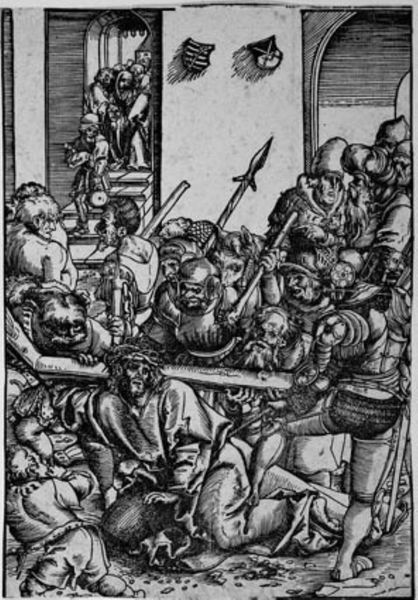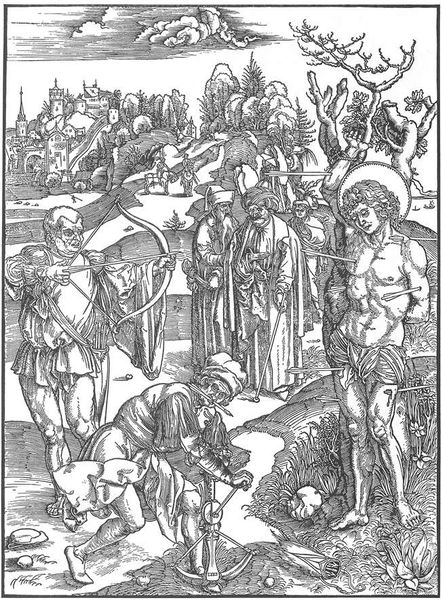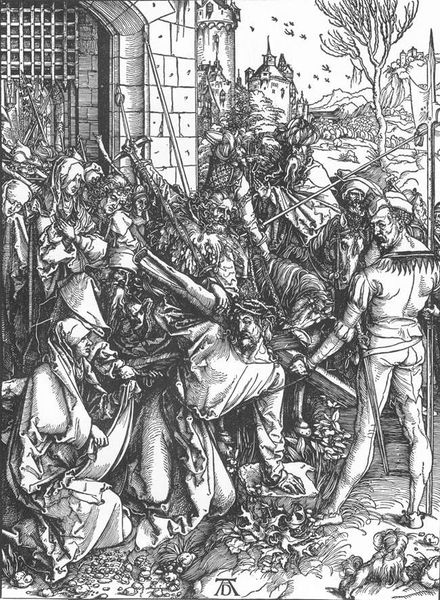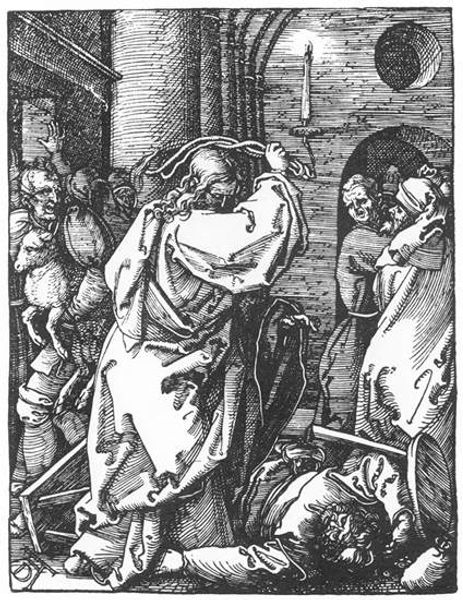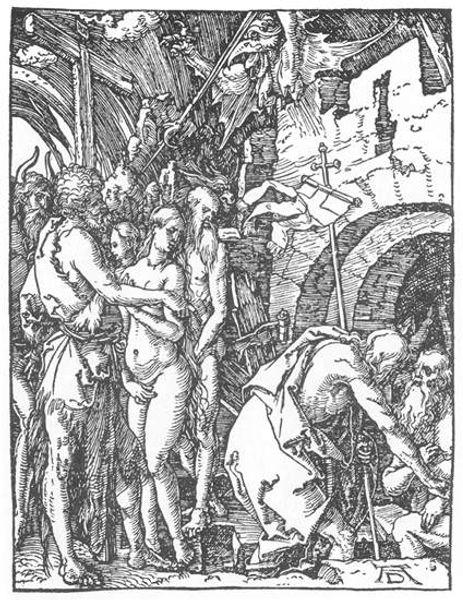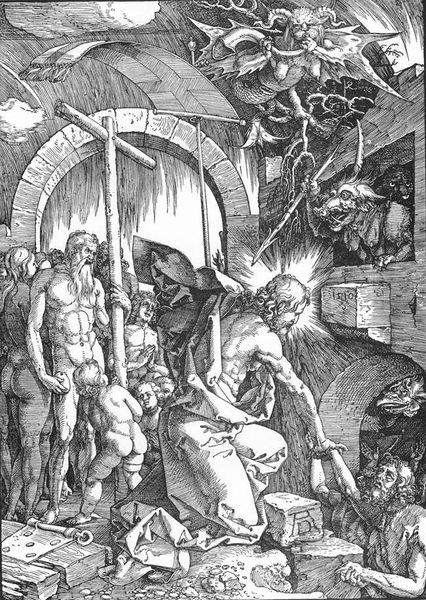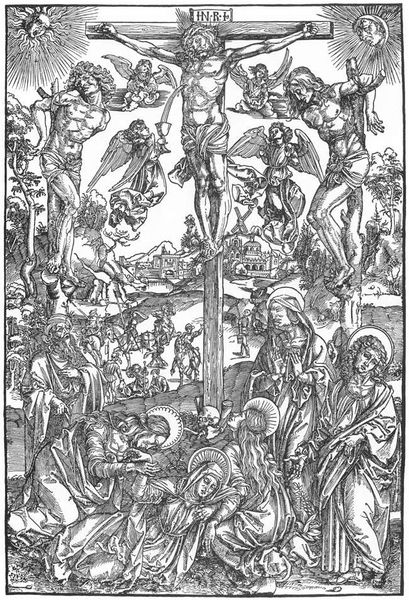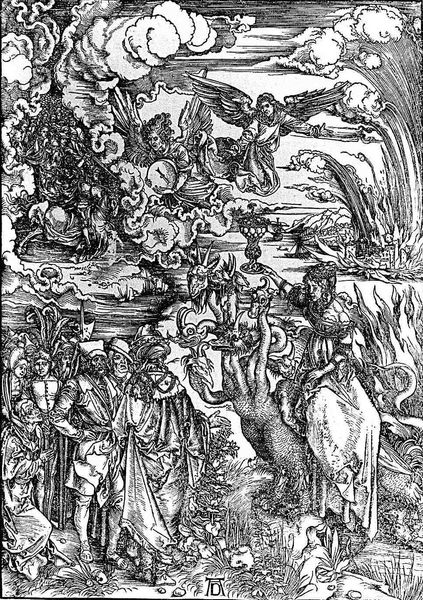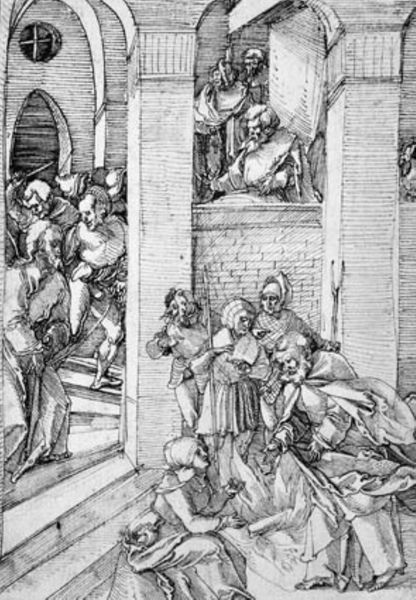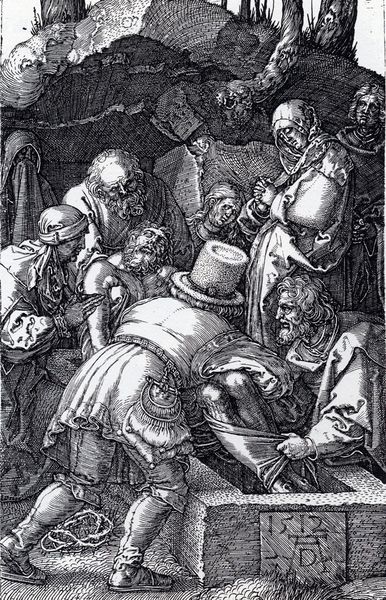
#
comic strip sketch
#
pen illustration
#
junji ito style
#
ink line art
#
jesus-christ
#
linework heavy
#
sketchwork
#
pen-ink sketch
#
thin linework
#
christianity
#
storyboard and sketchbook work
#
story boarding
#
christ
Copyright: Public domain
Albrecht Durer rendered this woodcut, Lamentation for Christ, with striking emotional depth. Here, we witness the sorrowful scene of Christ's deposition, rich in symbolism and imbued with centuries of artistic tradition. The gesture of grief, arms raised in anguish, is not unique to Durer; it echoes through countless depictions of mourning from antiquity to the Renaissance. Consider the ancient Roman sculptures of grieving figures, their raised arms a universal expression of loss. This posture transcends time, resurfacing in various cultural and religious contexts as a primal response to suffering. The crown of thorns, discarded at Christ's feet, carries potent emotional weight, yet even here, a parallel can be drawn to ancient sun gods crowned with light, or the laurel wreaths of triumphant heroes. Such symbols, initially signifying triumph and divinity, are repurposed to underscore Christ's suffering. The power of this image lies in its ability to evoke a deep, subconscious connection to shared human experiences of grief, loss, and sacrifice, revealing how symbols evolve, adapt, and resonate across cultures and epochs.
Comments
No comments
Be the first to comment and join the conversation on the ultimate creative platform.
